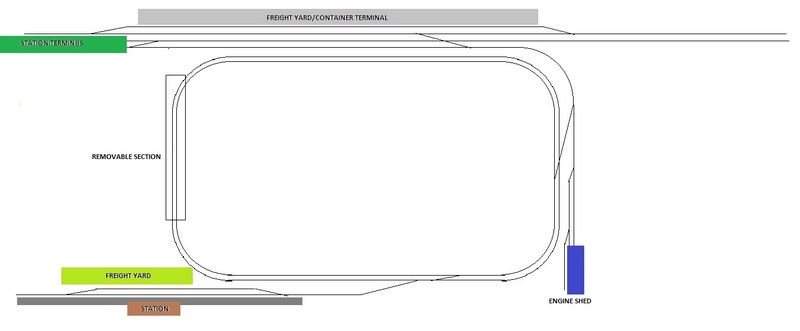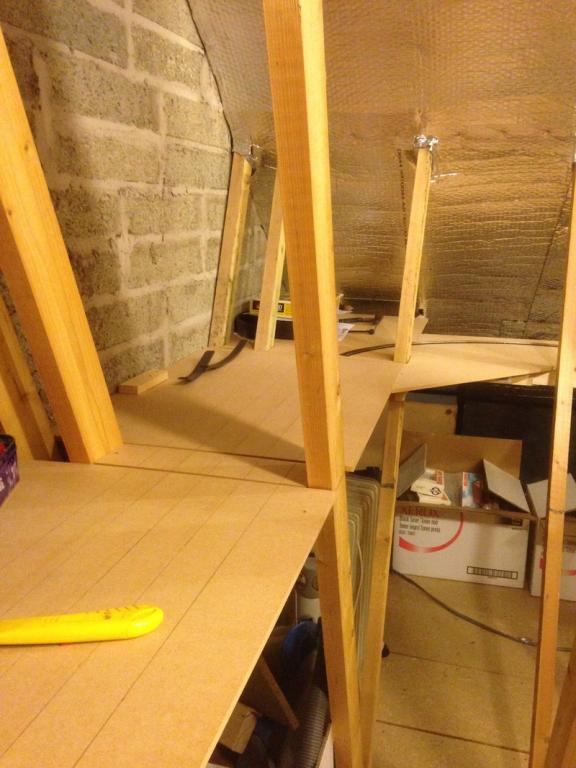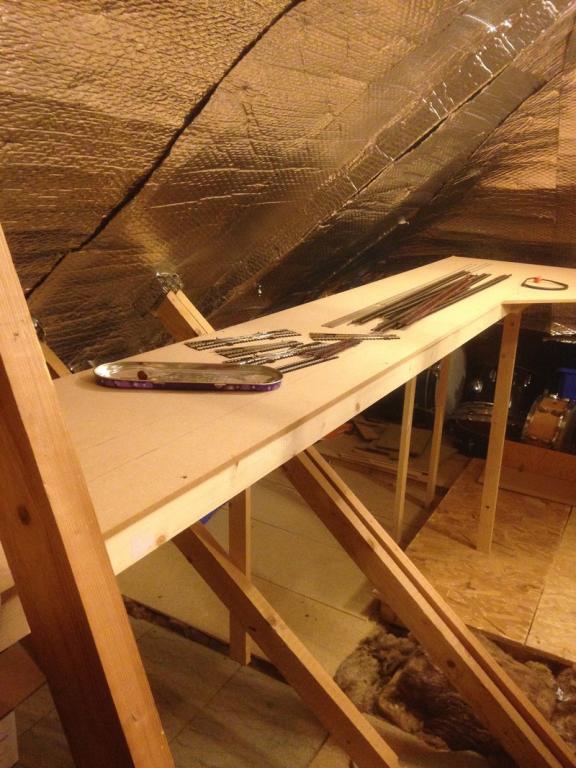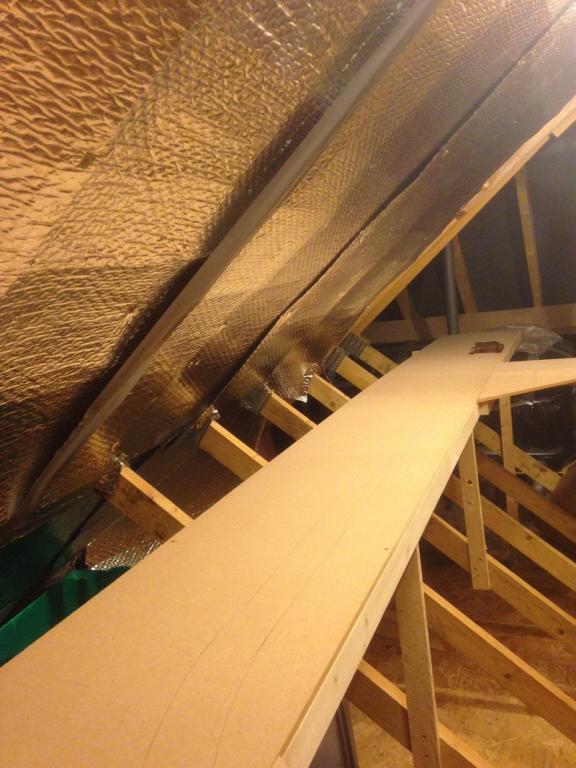
irishthump
-
Posts
1,840 -
Joined
-
Last visited
-
Days Won
7
Content Type
Profiles
Forums
Resource Library
Events
Gallery
Blogs
Store
Community Map
Posts posted by irishthump
-
-
If the loco runs on DC then it can be converted. With a metal model it really depends on the way current is collected, I'm not familiar with SSM kits but some models with metal frames use it to conduct current to one side of the motor. If that's the case extra care has to be taken to isolate the motor from the frame or chassis. You also have to be careful that the decoder will not come into contact with any metal parts.
-
This guys has an interesting way to slow the cars.....
[video=youtube;-YY55xmNXfQ]
-
This is a good idea as i do plan to change all wheels on wagons to metal ones.
less manual work and more automation.. i really like this idea
this would work like a pneumatic retarder system.
Glad you like the idea, I actually think it would work well. Small neodymium magnets could be placed just inside the rails. It's the magnetic pull on the axles and not the wheels that has the most effect.
-
im perplexed in how you will handle uncoupling with Tension lock , as you cant get delayed uncoupling and then how will you break the vans. I suppose you could fashion a rail retarder rather like modern US practice, but in the UK hump yards , a lot was done by manual braking. It has been suggested in H0 that air jets could be used to retard the wagons,
You could try magnets. The wheels and axles on most British RTR stock are attracted to magnets. I've notice this myself when using Kadee uncoupling magnets, in some cases the wagon or van would stop dead right over the magnet! It would take a bit of experimentation with the size/power of the magnets and their positioning but it would be possible to get the required effect.
-
Great video, and lovely job on the plough vans.
-
Hi IT,
If you were to have trains running in opposite directions on the main circuits, the clockwise circuit would not be able to directly access the station terminus and vice versa for the anti-c to the station. I realize the plan may be to go from one to the other via the main circuits and then run the loco round if not top'n'tailed
Thanks for the comments, Divecontroller. Yes that's the idea, trains will run from either station, do a couple of laps of the main circuit then head into the other station.
In the case of the larger terminus after arrival a station pilot will shunt release the loco from the train and it can head to the loco shed for service/refuelling.
The smaller station has a runaround loop as you describe. The same with freight trains.
This sort of operation was something I couldn't do with my last layout and it was the first thing I wanted to put right!
-
Nice! Should have plenty of room to run some American freight

That's what the upper level will be for!
-
-
Huge potential there... looking forward to seeing the layout develop.

Thanks Garfield! Although it looks quite cramped from the photos it's possible to walk around most of the layout and there's headroom enough to stand while operating.
The track plan is all in my head at the moment but I'll try to sketch something out so that I can post it here.
-
Been working quietly on the new layout the last few weeks and finally have something to show for it!
Progress has been slow but the baseboards are finished and I'll be starting to lay the track hopefully this weekend.
I decided to make this layout at a more comfortable height to work on (the old layout was barely 3ft high and it was a nightmare to access wiring under the baseboards). These baseboards are about 4.5 feet high, roughly chest height. I'm also hoping to add another level above this in the future.
Here's a few pics...
This section is about 15ft long and I plan to put a fair sized passenger terminus and freight yard here.
Off to the right; there will be a double track loop about 8ft square. Possibly an engine shed and refuelling point along this side.
The opposite side to the planned terminus. This will be another station with a run around so I can turn trains and send them back onto the mainline.
And back around to where we started. This section will be removable as it's right over the attic door.
-
What about June, August, and October bank holiday weekends?
Bank holiday is a colloquialism, the proper term in Ireland is Public Holiday. They are all Public Holidays , as are Christmas Day, Stephen's Day, Patrick's day etc.
-
Yes, the banks are closed but it is not a public holiday.
Correct. It's not a public holiday, but it IS a bank holiday.
There are only two Bank Holidays in Ireland; Good Friday and December 27th.
-
Great detail, all you need is some litter and it would look like a photograph.
And a couple of smashed panes of glass!

-
sorry Church holiday
True. But it's also a bank holiday.
-
Shouldn't be closed, Friday is only a bank holiday.
-
Incredible.
What strikes me the most about this is that there is NOTHING that gives this away as a scratch built model!
-
Use parcelmotel.com - pay €3.50 to pick it up from your local 'motel' and get free postage from the seller
It's gone up to €3.95 but still a bargain! And An Post never get there hands on it!
-
I implemented the headlight directional change recommended and it works fine so many thanks for that.
Glad that worked for you, Declan.
The Hattons chips are rebadged Gaugemaster decoders. You can download the manual for them here - http://www.ehattons.com/media/md4instructions.pdf
It's the manual for the 8 pin version, but all the CVs are the same.
-
I've wondered if there is a Heljan model that might make a donor chassis for a SF A class kit. The under frame just needs to be co-co and the right length front axel to front axel, don't care as much about the scale accuracy of the bogie side frames, fuel tank, etc.
You won't find a Heljan loco that will be suitable without performing some surgery on it.
One idea I had was to use a Heljan drive mechanism and bogies but you would need to scratchbuild a chassis. Howes models sell all the parts needed, see this link - http://www.howesmodels.co.uk/category/'OO'%20General%20spares
The bogies come without wheelsets but they are available on the next page.
-
F0 - controls the front and rear lights fine
F1 - turns the front headlight permanently ON/OFF (now I'd ideally like the headlight to switch automatically to the rear when the loco is reversed)
F2 - turns the rear headlight permanently ON/OFF
F3 - Does nothing - was hoping this would turn the cab light ON/OFF
You can re-map the function keys so that one button will turn the headlights on and off and they will light up in the direction of travel, but you won't be able to control the cab lights.
I just looked at the Hattons listing for that decoder and they don't have a manual to download!
Try these settings:
CV51 - 0
CV52 - 16
CV36 - 4
This should give you directional headlights controlled by F1.
-
I use parcel motel all the time. However the likes of Howes will NOT post paints to NI, IOM, or even the Isle of Wight, only the island of GB unless a courier is used! They refused to post enamel paints to NI even though it's in the UK.
Try Peter's Spares, they have an Ebay store.
-
How many functions does the hattons chip have? It might not have enough for the 201.
That's the problem.
The Hattons decoders have 4 functions; 2 are used by the front and rear marker lights, 1 for the forward headlight, 1 for the rear headlight. To operate the cab lights requires 2 more so a 6 function decoder is needed.
-
Is there a supplier of Railmatch paints in Ireland?
I recently ordered from a well known UK supplier who informed me they had to charge a whopping GBP £30 for courier delivery because they are paints (i.e. hazardous chemicals - joke!!), so I cancelled the order.
Get set up with Parcel Motel. They will ship to them at normal rates (some suppliers post free within the UK) and you just pay €4 to have it shipped to the nearest ParcelMotel machine.
-
They are the old shorter length Hornby coaches.
Rich,
Correct!
.png.c363cdf5c3fb7955cd92a55eb6dbbae0.png)







Hump yard
in Questions & Answers
Posted
Ha! Those wagons better have sprung buffers or they'll be nothing left of them after a while!
Seriously though, that's impressive. Something to slow the wagons down would make it perfect.